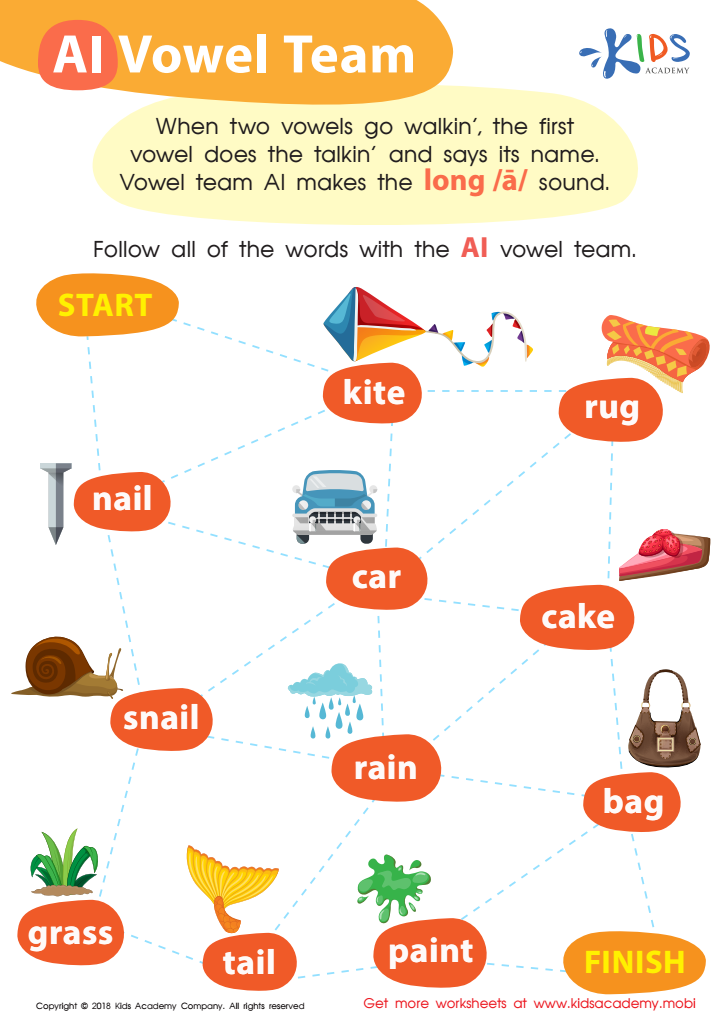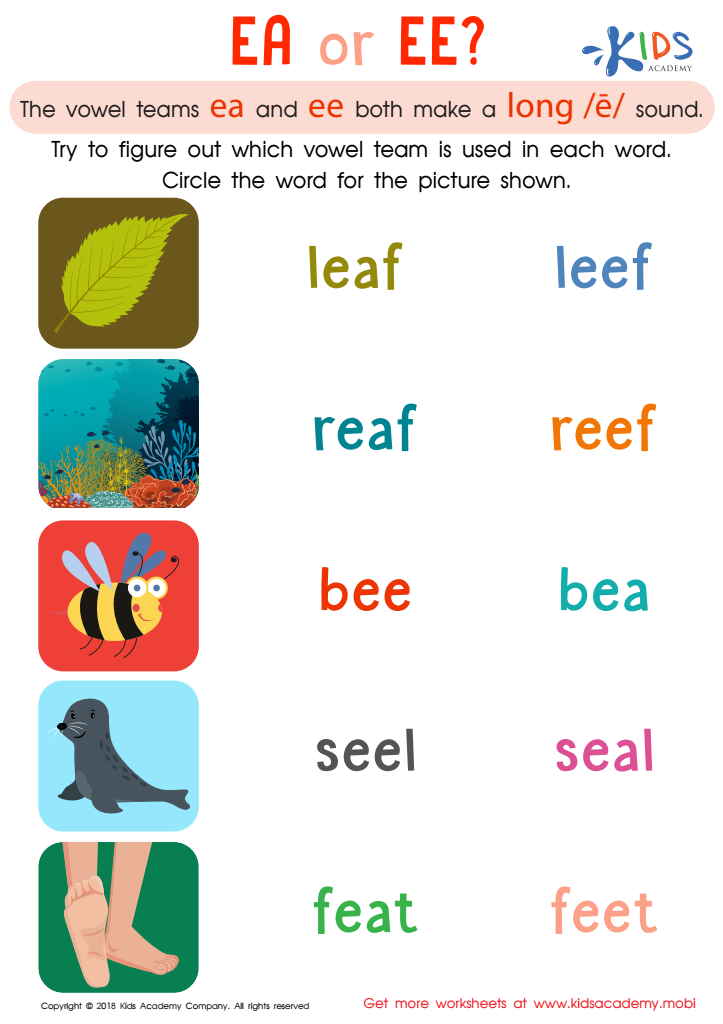Vocabulary expansion Vowel Blends Worksheets for Ages 8-9
6 filtered results
-
From - To
Explore our engaging Vocabulary Expansion Vowel Blends Worksheets designed specifically for ages 8-9! These interactive resources help young learners master vowel blends to enhance their reading and writing skills. Through fun activities and exercises, children will expand their vocabulary, improve their phonemic awareness, and develop confidence in using new words in context. Our worksheets feature a variety of dynamic tasks that cater to different learning styles, ensuring every child stays motivated and challenged. Perfect for classroom or at-home learning, these worksheets provide a solid foundation for literacy development, making learning fun and effective. Get started today and watch your child's vocabulary thrive!


Reading: OW and OU Words Worksheet


Reading: AI Vowel Team Worksheet


Reading: AW and AU Words Worksheet


Reading: EA and EE Worksheet


Reading: OI and OY Worksheet


Reading: EA as in Bread Worksheet
Vocabulary expansion, particularly focusing on vowel blends for children aged 8-9, is crucial for their language development and overall academic success. During this stage, children transition from learning basic reading and writing skills to more complex comprehension and expression. Vowel blends, such as “ai,” “ow,” or “ua,” enhance children's phonetic awareness, facilitating better reading fluency and comprehension.
Teachers and parents should recognize that vocabulary directly influences a child’s ability to articulate thoughts, engage in discussions, and understand lessons across various subjects. A robust vocabulary builds confidence in communication, encouraging children to participate more actively in classroom activities. Furthermore, as children encounter more complex texts, a solid grasp of vowel blends and vocabulary aids in decoding unfamiliar words, reducing frustration and promoting a positive learning experience.
Additionally, vocabulary skills are linked to critical thinking and problem-solving. By enhancing their vocabulary, children learn to analyze, compare, and contrast information effectively. Thus, investing in vocabulary expansion strategies, including those focusing on vowel blends, is vital for nurturing well-rounded individuals who excel academically and socially. Engaging in fun, interactive vocab-building activities helps foster a love of language, setting the foundation for lifelong learning and effective communication.
 Assign to My Students
Assign to My Students
















